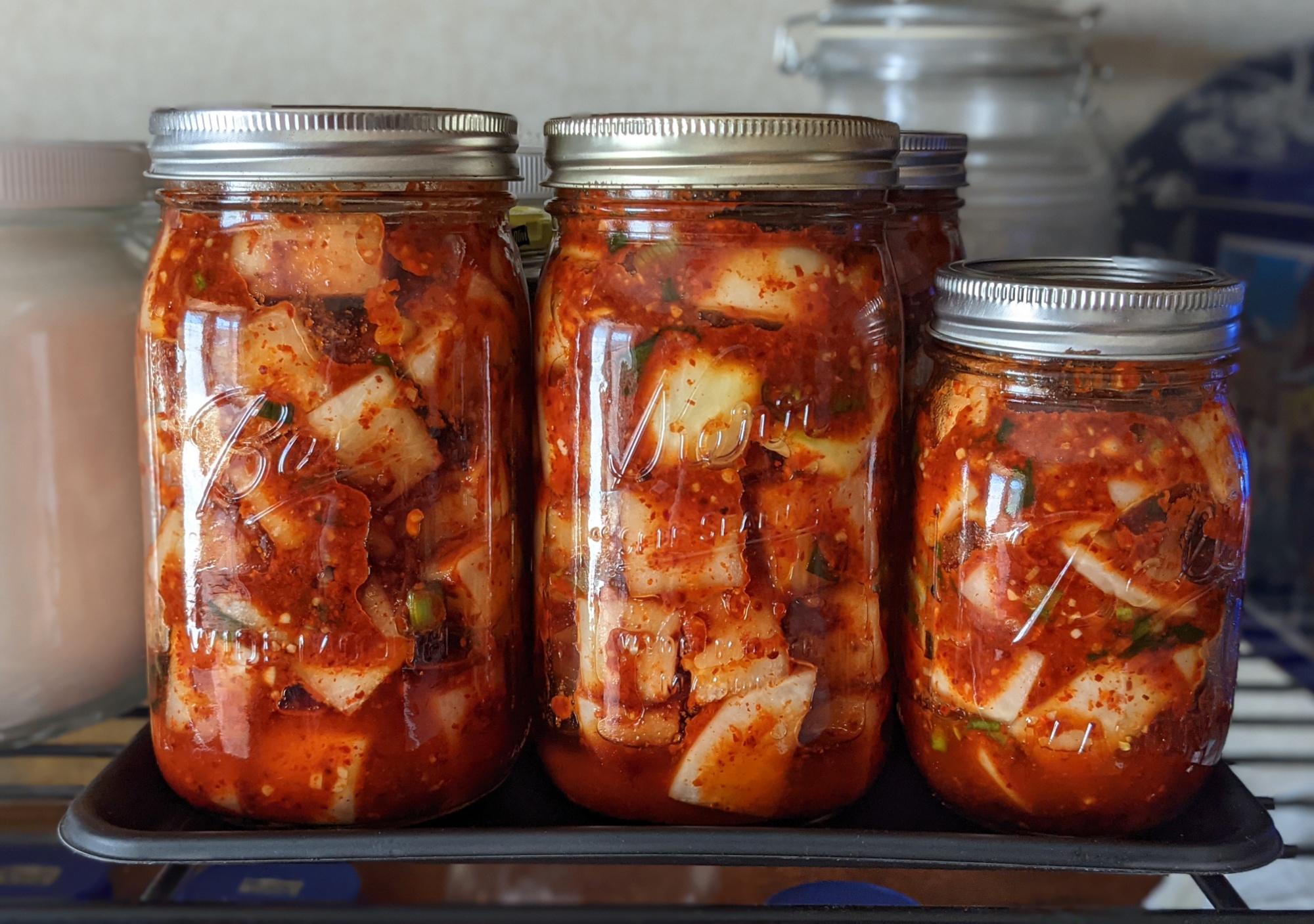
I’m just guessing that there may be some people out there for whom having hands redolent of garlic, fish sauce, and gochugaru (고추가루) would be unappealing…but I actually find it rather pleasant. Why? Because I know it means some delectable variety of kimchi is underway. In a couple of weeks, the nascent kimchi – currently salty and crisp – will be perfectly fermented and full of probiotic goodness.
My favorite kimchi is definitely Kkakdugi (깍두기), a Korean radish kimchi. This veggie condiment is delicious even before it’s fermented: immediately after the first step (salting and sugaring), I often eat a cube or two. The radish is mild, juicy, and refreshing.
Korean radish is called Mu (무). It looks like a very plump daikon radish, with a greenish tinge at the top (similar to a white turnip’s coloring). The flavor is milder and less “spicy” (like horseradish spicy) than daikon, and the two are really not interchangeable. I know this because I’ve made kkakdugi from daikon and it wasn’t similarly juicy and the flavor profile was off. Get mu, not daikon, for making the tastiest kkakdugi.

The process starts by peeling and chopping up the mu. Optimally, the mu is fresh – crispy and juicy. As with other veggie ferments (like sauerkraut), the juice is an important ingredient in making kimchi because it helps create the “brine” as well as enhancing the flavor in a way that plain saltwater can’t.
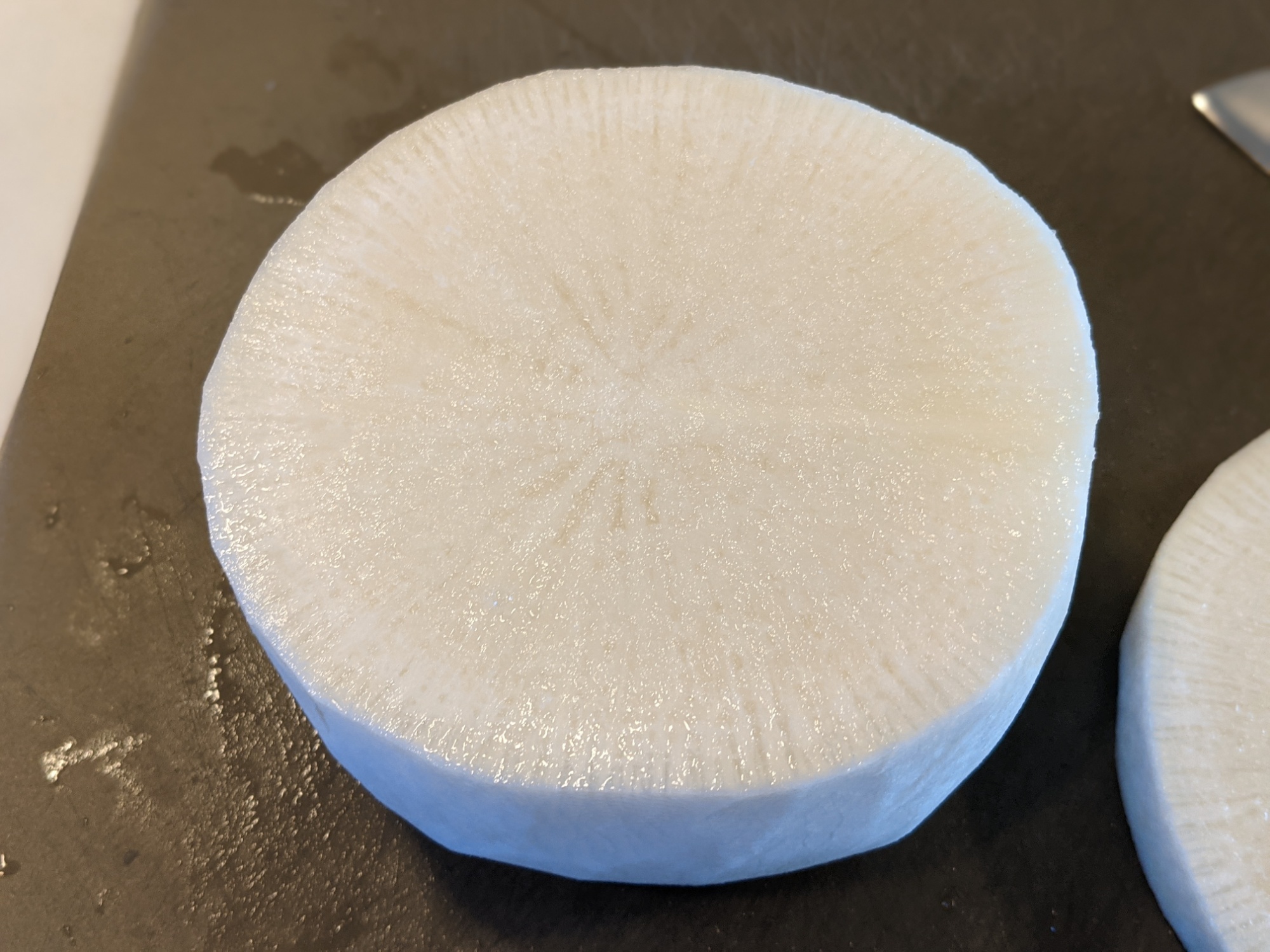
Once cubed, the mu is salted and sugared. It rests for a half hour, during which the juice from the radish pools in the bottom of the bowl. While the mu is resting, I like to prep the remaining ingredients – minced garlic, ginger, scallions, fish sauce, gochugaru – in a small bowl and let the flavors meld. The final ingredient for the spice mix is some of the juice extracted from the mu.
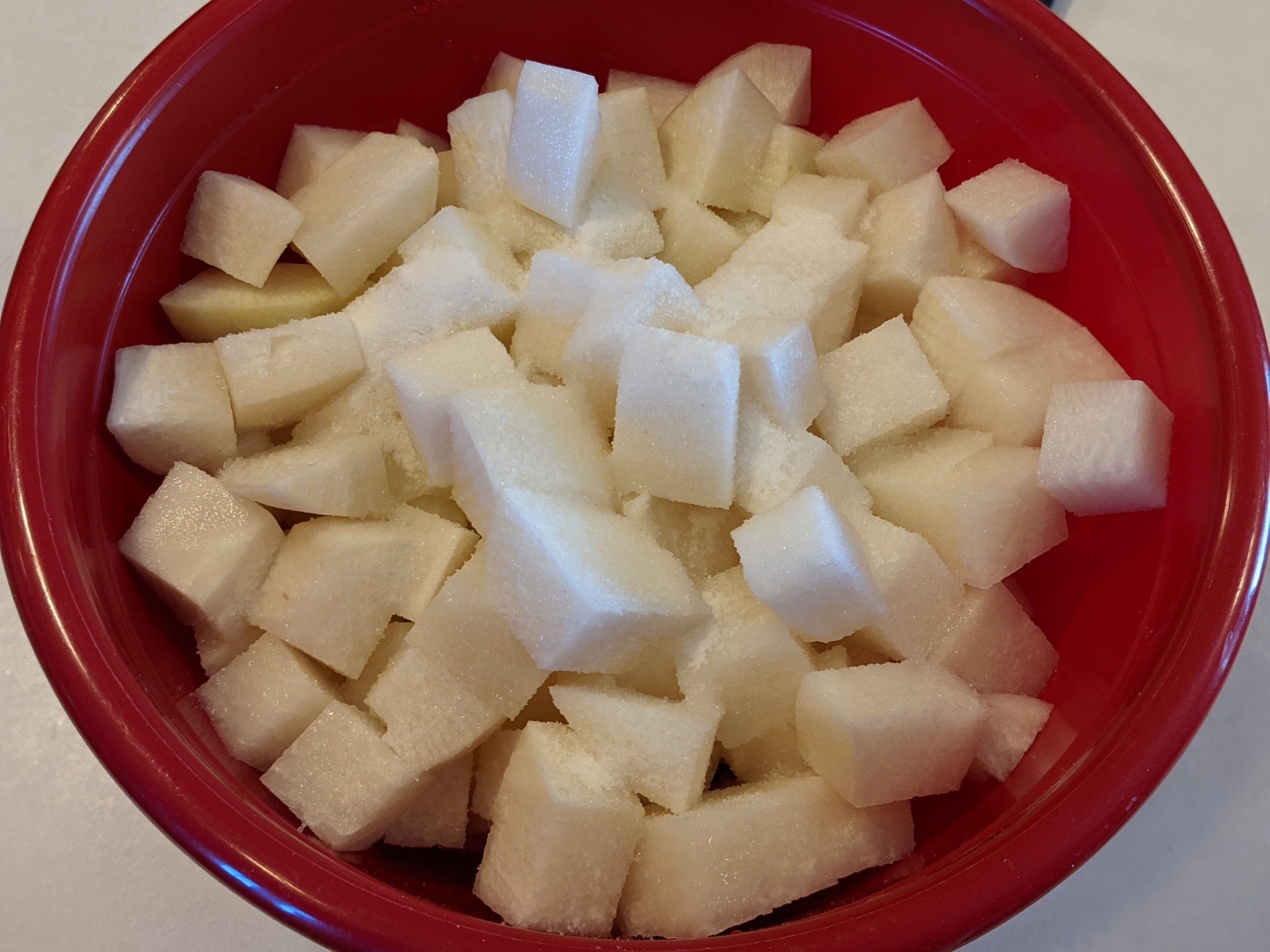
Now, the fun part: mixing it up. This is where clean hands outperform a utensil, and how hands get that unique perfume. I kept one hand out of the bowl so that I could handle jars, etc., without making a huge mess, but I think the mixing process is most effective if both hands are engaged.
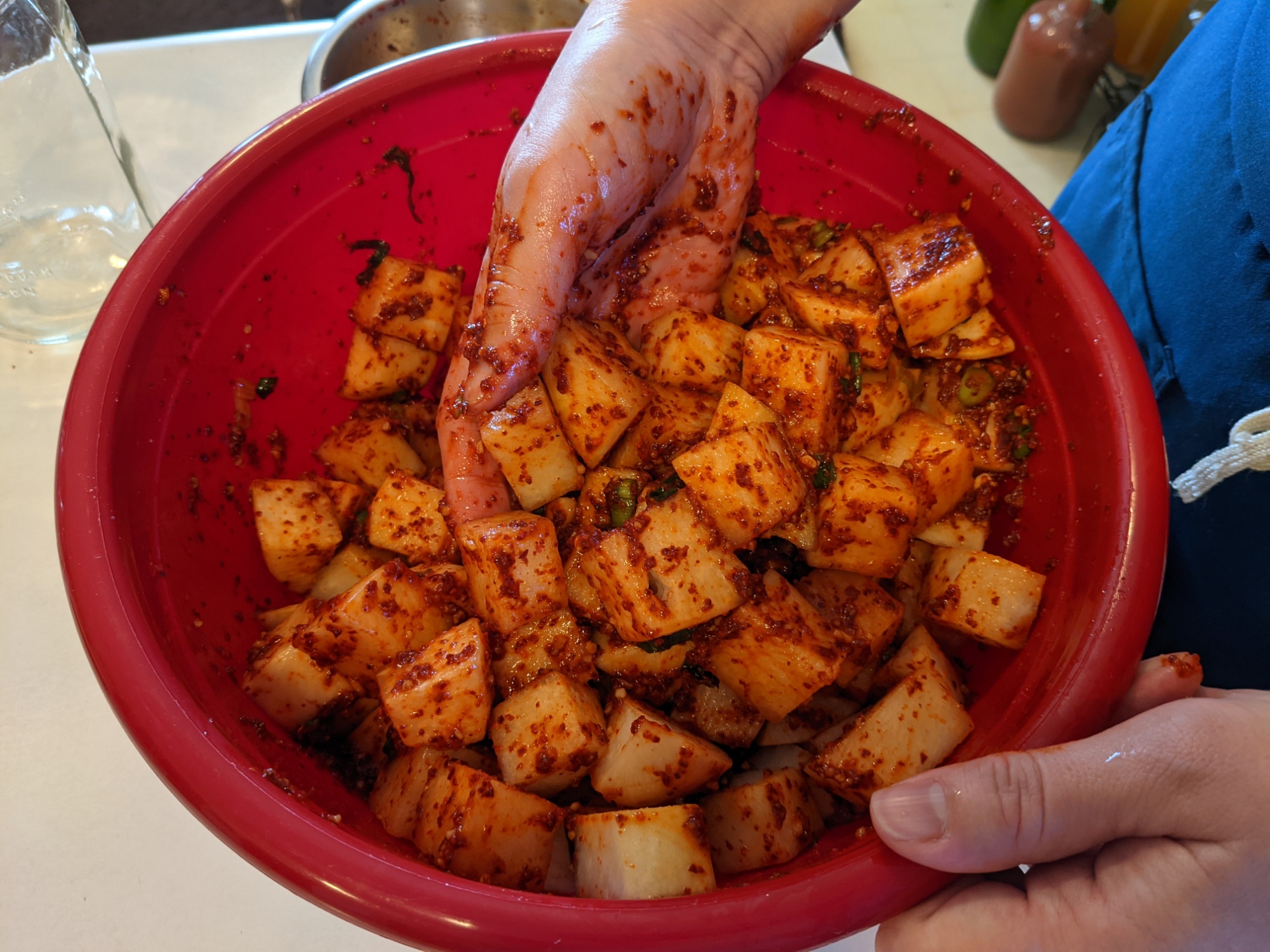
After the spice mix has thoroughly coated the mu, the kimchi ready to be placed in fermenting jars. Since the mu is very solid, packing the jars is more difficult than it would be with something like cabbage, so a tool like a muddler or pestle really helps jam the kimchi into the jar. Once packed, I wipe the rims of the jars clean and tightly close the lids. The jars will sit on a shelf in my kitchen, being burped regularly and periodically sampled until just the right level of sour is reached.
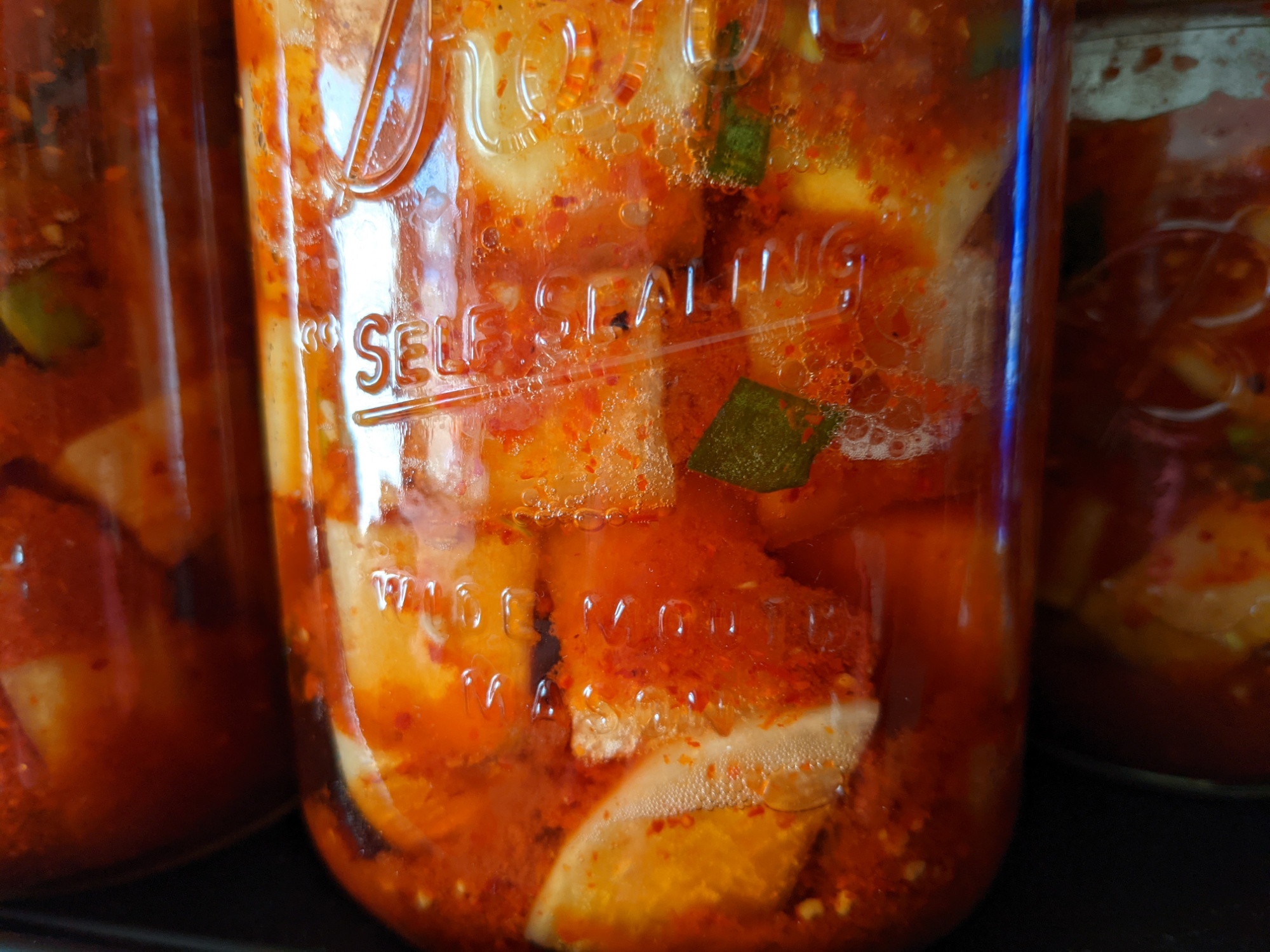
Finished kkakdugi is sensational with rice, added to ramen and other soups, on burgers and locomoco…and right out of the jar. Its distinctive, piquant flavor will awaken even the most jaded tastebuds, and its pungent aroma assertively announces that it’s really something special. Just keep it well-sealed (I enclose the jars in a sealed freezer bag) in the fridge, or its fragrance may work its way into other food items like milk.
Want to try making it yourself? Find a great recipe at Maangchi.com.

Comments are closed.